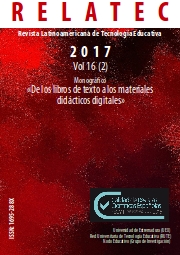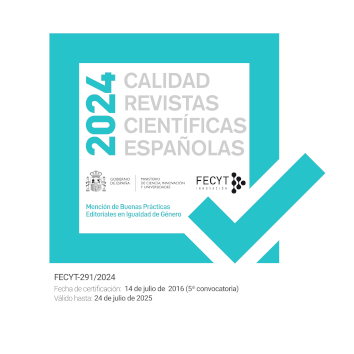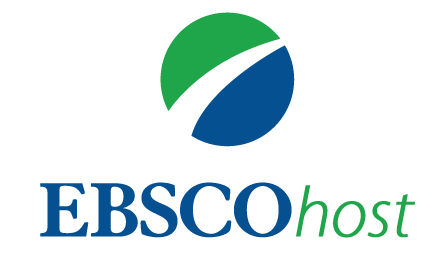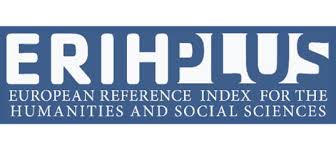The areas of intervention of social education professionals. A study with multimedia conceptual maps
DOI:
https://doi.org/10.17398/1695-288X.16.2.205Keywords:
Higher Education, Pedagogical Innovation, Social Education, Classification squeme, Social SciencesAbstract
This article presents a diachronic study in which the conceptions of university students on the specific areas of Social Education through the elaboration of collaborative multimedia concept maps are analyzed. The sample consists of 321 students belonging to the Social Education and Dual Degree Social Education and Social Work Degree courses of the Universidad Pablo de Olavide, during the academic years 2014/15, 2015/16 and 2016/17. Through a qualitative methodology, through virtual ethnography and quantitative techniques with the use of questionnaires, we analyzed the intervention areas in Social Education and the most significant results were the following: drug addiction (16%), people with disabilities and mental health problems (13%), elderly (13%), and childhood (9%). Other areas that students have identified as being specific to Social Education are: immigration and adults (7%), adolescence (6%), gender violence (5%), socio-community care (4%), sociocultural animation and labor integration 3%), as well as judicial measures, social integration and exclusion (2%), homelessness, child violence, family mediation, education, street education, interculturality, or child violence (1%). In order to point out these concepts, multimedia conceptual maps have been elaborated which show fundamentaly through a vertical hierarchical arrangement.
Downloads
References
Bas, E., Pérez, V., & Vargas, M. (2014). Educación y género. Formación de los educadores y educadoras sociales. Pedagogia Social. Revista Interuniversitaria, 23, 95-120. Recuperado a partir de https://recyt.fecyt.es/index.php/PSRI/article/view/37084
Bogdan, R., & Biklen, S. K. (1992). Investigación cualitativa de la educación. Needham Heights, MA: Allyn and Bacon.
Caride, J. A. (2003). Las identidades de la Educación Social. Cuadernos de Pedagogía, 321, 48-51.
Castañeda, M.B., Cabrera, A. F., Navarro, Y., & Vries, W. (2010). Procesamiento de datos y análisis estadísticos utilizando SPSS: Un libro práctico para investigadores y administradores educativos. EDIPUCRS. Porto Alegre, 2010, CDD 519.50285. Recuperado a partir de http://www.pucrs.br/edipucrs/spss.pdf
Estrada, V., & Febles, P. (2000). Mapas conceptuales para la enseñanza de Nuevas Tecnologías. XVI Simposio Sociedad Mexicana de Computación en Educación, Monterrey, México.
Fernández-Márquez, E., Vázquez-Cano, E., & López-Meneses, E. (2016). Los mapas conceptuales multimedia en la educación universitaria: recursos para el aprendizaje significativo. Revista Campus Virtuales, 5(1), 10-18.
Green, S. B., & Salkind, N. J. (2011). Using SPSS for Windows and Macintosh: Analyzing and Understanding Data, 6E. EEUU: Pearson.
Kinchin, I. M. (2000). Using concept maps to reveal understanding: A two-tier analysis. School Science Review, 81 (296), 6-41.
Kinchin, I.M., Streatfield, D., & Hay, D. (2010). Using concept mapping to enhance the research interview. International Institute for Qualitative Methodology, 9(1), 52-68.
López-Meneses, E., Vázquez-Cano, E., & Fernández-Márquez, E. (2016). Las concepciones del estudiantado de Educación Social y Trabajo Social de la Universidad Pablo de Olavide sobre los ámbitos de intervención a través de los mapas conceptuales multimedia. Educació Social. Revista d’Intervenció Socioeducativa, 62, 43-57. Recuperado de: http://www.raco.cat/index.php/EducacioSocial/article/view/308227/398247
Miles, M. B., & Huberman, A. (1994). Qualitative data analysis: an expanded sourcebook. Newbury Park, CA: Sage.
Monje, C.A. (2011). Metodología de la Investigación Cuantitativa y Cualitativa. Guía Didáctica. Nieva: Universidad Surcolombiana. Facultad de Ciencias Sociales y Humanas. Programa de Comunicación Social y Periodismo.
Muñoz, J. M. (2010). Los mapas mentales como técnica para integrar y potenciar el aprendizaje holístico en la formación inicial de maestros/as. (Tesis inédita de doctorado). Córdoba: Universidad de Córdoba.
Novak, J. (2000). The Theory Underlying Concept Maps and How To Construct Them. Recuperado a partir de http://stanford.io/2xJcJQd
Novak, J. D., & Cañas, A. J. (2008). The Theory Underlying Concept Maps and How to Construct Them. Technical Report IHMC CmapTools 2006-01 Rev 01-2008. Florida Institute for Human and Machine Cognition. Recuperado a partir de http://cmap.ihmc.us/Publications/ResearchPapers/TheoryUnderlyingConceptMaps.pdf
Novak, J. D. (1998). Learning, creating and using knowledge. Concept maps as facilitative tools in schools and corporations. Journal of e-Learning and Knowledge Society, 6(3), 21-30.
Ortega, J. (2005). Pedagogía Social y Pedagogía Escolar: la Educación Social en la Escuela. Revista de Educación, 336, 111-127.
Ronda-Ortín, L. (2012). El educador social Ética y práctica profesional. Pedagogía Social. Revista Interuniversitaria, 19, 51-63. Recuperado a partir de https://recyt.fecyt.es/index.php/PSRI/article/view/36984/20549
Valdés, M.A., Menéndez, L.M., & Valdés, V.G. (2006). Los mapas conceptuales: un recurso para el aprendizaje apoyado en tecnologías. Píxel-Bit.Revista de Medios y Educación, 28, 89-97.
Valverde-Berrocoso, J., & Garrido-Arroyo, Mª. C. (2002). El mapa conceptual: software de diseño y creación. Cáceres: Publicaciones Extremadura.
Vázquez-Cano, E., López-Meneses, E., & Fernández-Márquez, E. (2013). Concept Mapping For Developing Competencies in European Higher Education Area. International Journal of Humanities and Social Science, 3(17), 7-18. Recuperado de: http://www.ijhssnet.com/index.php/indexes.html
Villalustre Martínez, L., y Del Moral Pérez, E. (2010). Mapas conceptuales. Mapas mentales y líneas temporales: objetos «de» aprendizaje y «para» el aprendizaje en Ruralnet. Revista Latinoamericana de Tecnología Educativa, RELATEC, 9(1), 15-27. Recuperado a partir de http://relatec.unex.es/article/view/602
Downloads
Published
Issue
Section
License
Authors who publish in this journal accept the following conditions:
1. The Author retains copyright in the article. Upon acceptance of the article, the author shall grant to the Publisher the right of first publication of the article. with the dcoument registered with the Creative Commons Attribution-NonCommercial-NoDerivative 4.0 International (CC BY-NC-ND) license, which allows to third parties to use what is published whenever they mention the authorship of the work and the first publication in this journal.
2. Authors can make other independent and additional contractual agreements for the non-exclusive distribution of the article published in this journal (eg, include it in an institutional repository or publish it in a book) provided they clearly indicate that the work was published for the first time in this journal.
3. Authors are allowed and recommended to publish their work on the Internet (for example on institutional or personal pages) before and during the review and publication process, as it can lead to productive exchanges and a greater and faster diffusion of published work (see The Effect of Open Access).









